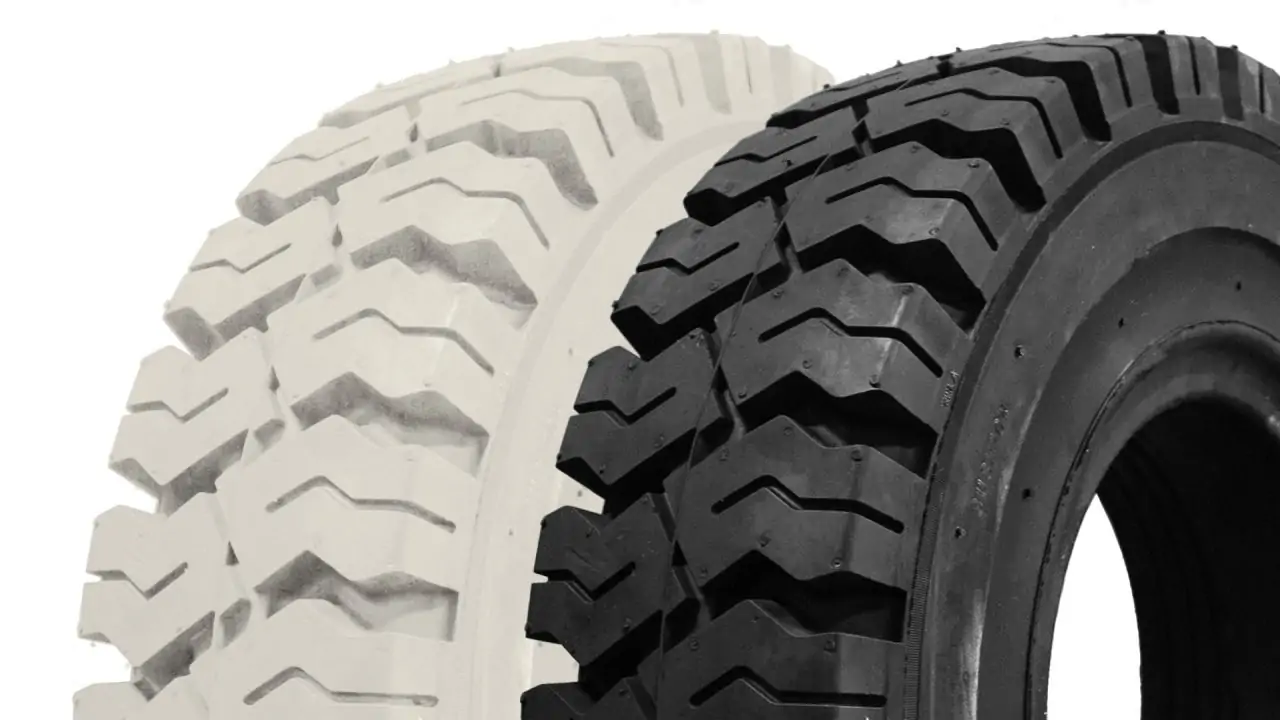What are ‘Non-Marking’ tyres and should you be using them?

During the last 15 – 20 years, the demand for indoor forklift applications has surged, driven by the rapid expansion of e-commerce, online shopping, and home deliveries, among other factors. This trend has significantly influenced the material handling and logistics sectors, leading to a notable increase in the popularity of non-marking forklift tyres.
During the normal operations of traditional black solid tyres, there can be black dust residue and black tyre lines / deposits left on floor surfaces. The traditional carbon black is a material that gives a tyre its signature black shade and works as part of the compound that gives it its resilience and grip. The aversion to tyre marks and black rubber residue on floors and goods has spurred a growing number of industries to enforce regulations mandating the use of non-marking tyres. In response to this rising demand, numerous tyre manufacturers now include non-marking products in their offerings.
What are non-marking tyres?
Non-marking have a different chemical compound using silica instead of carbon as a reinforcer, which generates the lighter colour. They are specially designed to prevent the black marks and residue commonly associated with standard tyres during forklift operations. They are available in resilient, pneumatic, and press-on band varieties.
Let’s explore the advantages and drawbacks of adopting these specialised tyres.
Pros:
- Floor Protection: The primary advantage of non-marking forklift tyres is their ability to protect indoor flooring. These tyres are made from special compounds that minimise scuffing and marking on surfaces such as epoxy, painted concrete, or tile floors. By using non-marking tyres, businesses can maintain a clean and professional environment without worrying about costly floor repairs.
- Reduced Contamination: Traditional black tyres can leave behind carbon rubber residue, which can contaminate products in sensitive environments such as food processing and medical facilities. Non-marking tyres eliminate this risk, making them ideal for industries where maintaining strict hygiene standards is crucial. Whilst they ensure that the products remain uncontaminated with black dust, they do still generate some dust – although less visible.
- Performance: Good traction, low rolling resistance, low heat build-up due to the use of silica-based compounds.
Cons:
- Higher Cost: One of the significant drawbacks of non-marking forklift tyres is their higher cost compared to traditional black tyres. The specialised silica based compounds and manufacturing processes required to produce non-marking tyres result in a premium price tag.
- Shorter Lifespan: Non-marking tyres tend to have a shorter lifespan than their black counterparts. The compounds used to make them resistant to marking can be less durable, leading to faster wear and tear, especially in demanding industrial environments. This shorter lifespan means more frequent tyre replacements, contributing to higher maintenance costs over time.
- Static build-up in non-marking tyres: The accumulation of static electricity through friction is prevalent in non-marking tyres because the silica used has isolating properties. In flammable or explosive settings grounding straps or chains must be fitted, however, they wear down, break, or collect dust and debris, which gradually insulates them from the ground and prevents the release of static build up. There are some manufacturers who have now developed anti-static non marking white tyres as a solution to address this issue. Choose your tyres carefully.
In conclusion, non-marking forklift tyres offer advantages in terms of floor protection and contamination prevention, making them an attractive option for certain indoor material handling operations. However, businesses need to consider the higher costs and shorter lifespan associated with these specialised tyres. Ultimately, the decision to use non-marking tyres should be based on a careful evaluation of the specific needs and priorities of the operating environment.
